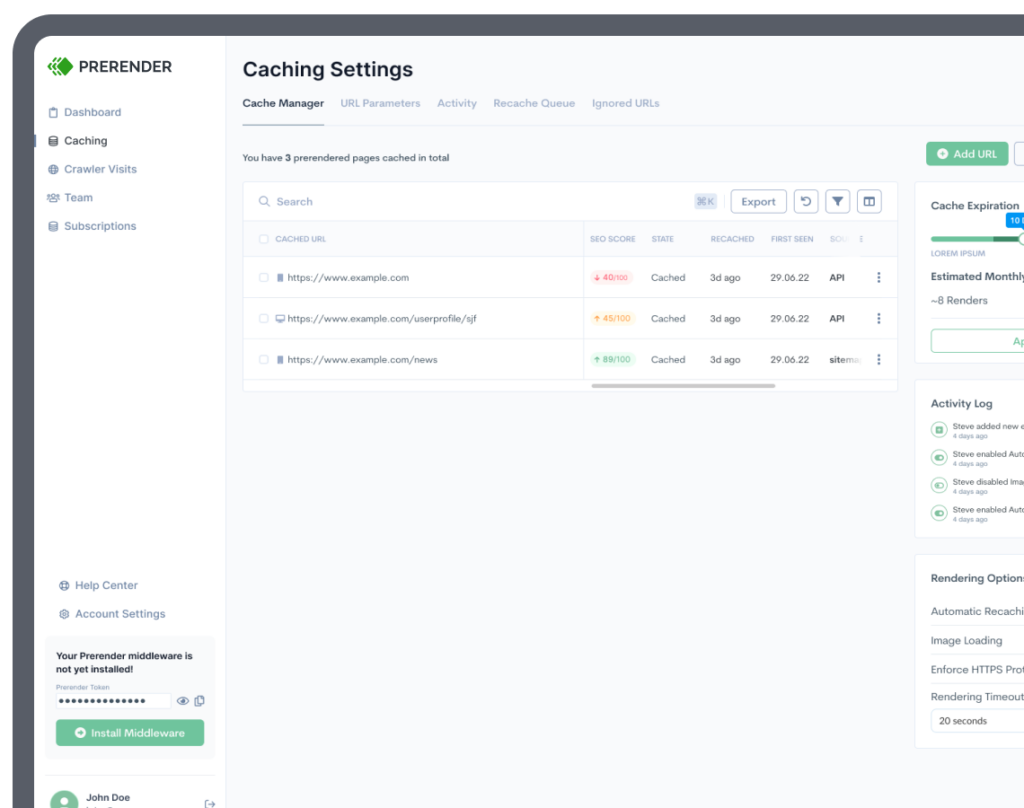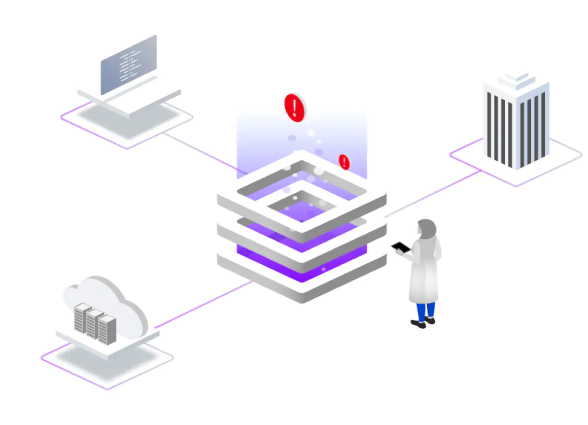Bigger Crawl Budget
No More Wasted Crawl Budgets
Manage your own crawl budget before Google does.
With JavaScript-heavy websites, crawl budgets can be depleted in the blink of an eye. As it is, you’re allocated a limited budget on a given day—and the more dynamic the content is, the harder it is to “read” against standard HTML sites.
If Googlebot struggles to read your content, some pages will have missing text, links, or images (or be left out entirely). This means you won’t compete with fully-rendered pages. Fortunately, you can improve your dynamic content crawling with Prerender.
Work Smarter with Resources
Use Your Crawl Budget Wisely
Gain a competitive advantage with a bigger crawl budget. Help Google to crawl your JavaScript pages.
Search engines dish out resources according to the size of your website, popularity in SERPs, quality of content, industry niche, health status, and more when compared to competitors. Regardless of your budget, bots will continue to crawl—even if it means using up your whole budget on a page that doesn’t add value to your bottom line. That’s where optimization comes into play.
Render and Optimize Your Crawl Budget
Maximize Your Crawl Potential
We make it possible to optimize crawl budgets so that JavaScript doesn’t eat it up on slow pages. Our prerendering solution will render your content in static HTML so that Google can see it, crawl it, and index it, without errors.
Better JavaScript SEO Crawling with Prerender
Try it yourself and see the difference it makes!
Get started with 1,000 URLs free.

Crawl Budget Optimization FAQs
Learn about Prerender, technical SEO, and JavaScript on our dedicated FAQs page.
What is a Crawl Budget
Why is a Crawl Budget Important for SEO?
Googlebot uses a crawl budget to index a page. [Note: you cannot be indexed if your content isn’t crawled.] Once indexed, search engines will determine the page rank based on its technical SEO qualities and other related factors. If you do not get indexed due to JS SEO issues, your content won’t appear in SERPs. Therefore, crawl rate optimization will help Google to crawl your JavaScript pages.
Can I Get a Bigger Crawl Budget?
- Reduce 404 error codes
- Resolve 301-redirect chains
- Use robots.txt to crawl selected pages only
Can Prerender Optimize My Crawl Budget?
Prerender renders your JS pages in advance. So, when bots crawl your pages, we feed them the HTML version of your JS pages, saving you plenty of crawl budget that can be allocated for web pages that affect your bottom line. Here is an in-depth explanation of the Prerender process (including visual help).
More About Crawl Budget Optimization
Want to get the hang of optimizing crawl budgets for dynamic content and JavaScript websites? Check out Prerender’s awesome crawl budget optimisation resources—we’ve got everything you need to know!

Trusted by 75,000+ Brands Worldwide
Serving +2.7 billion pages to crawlers.